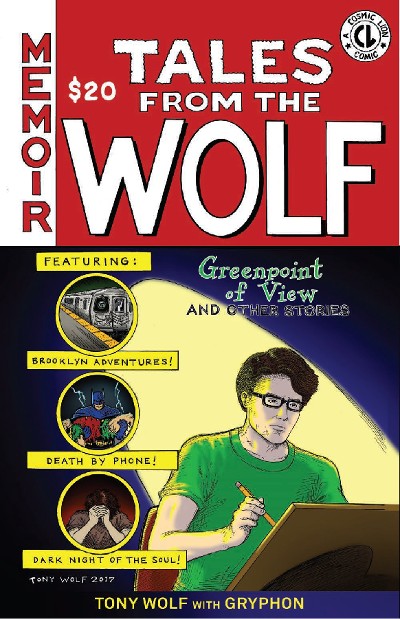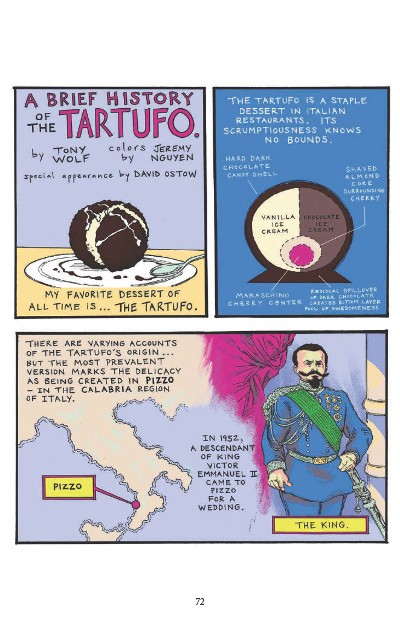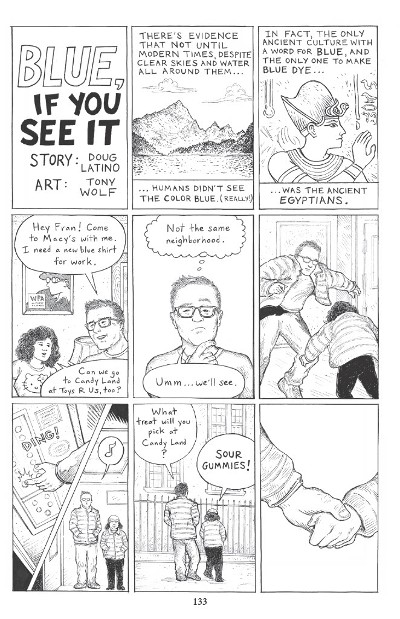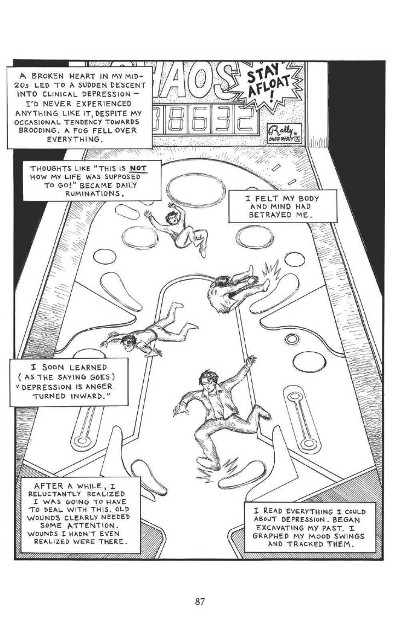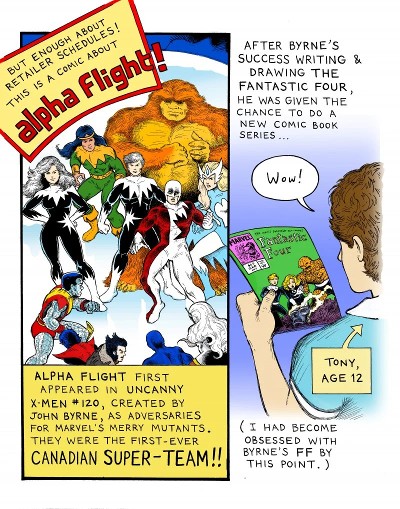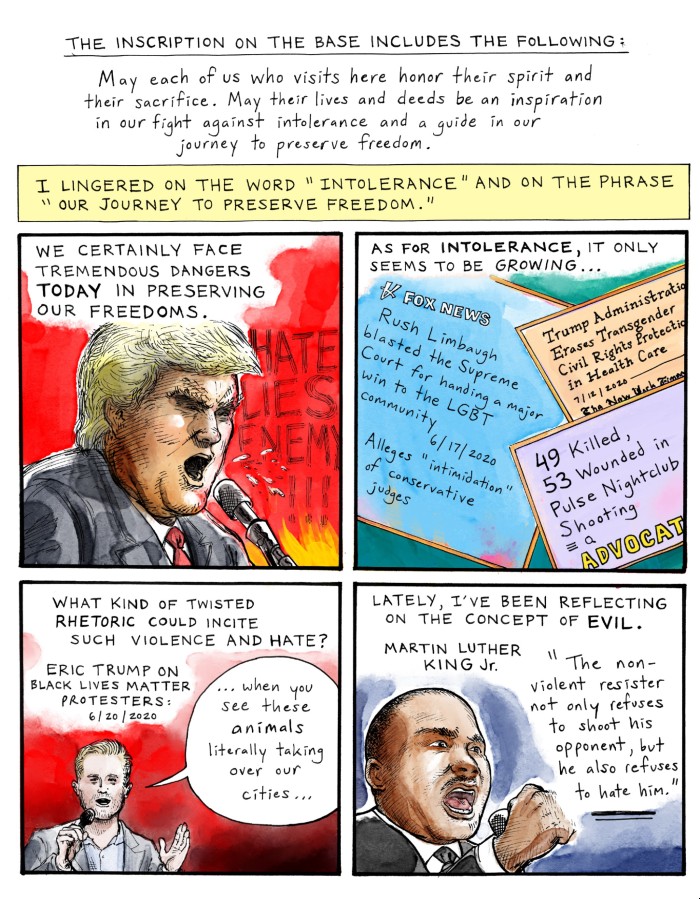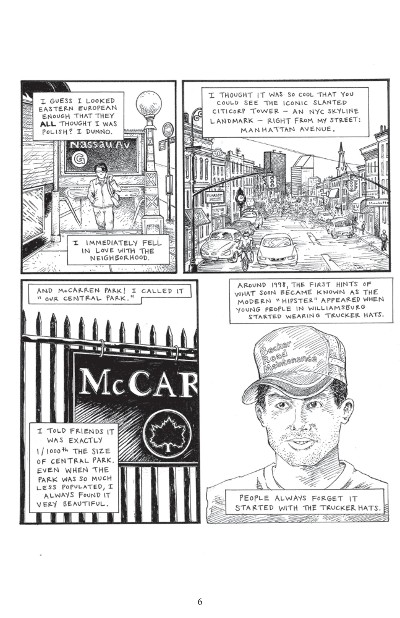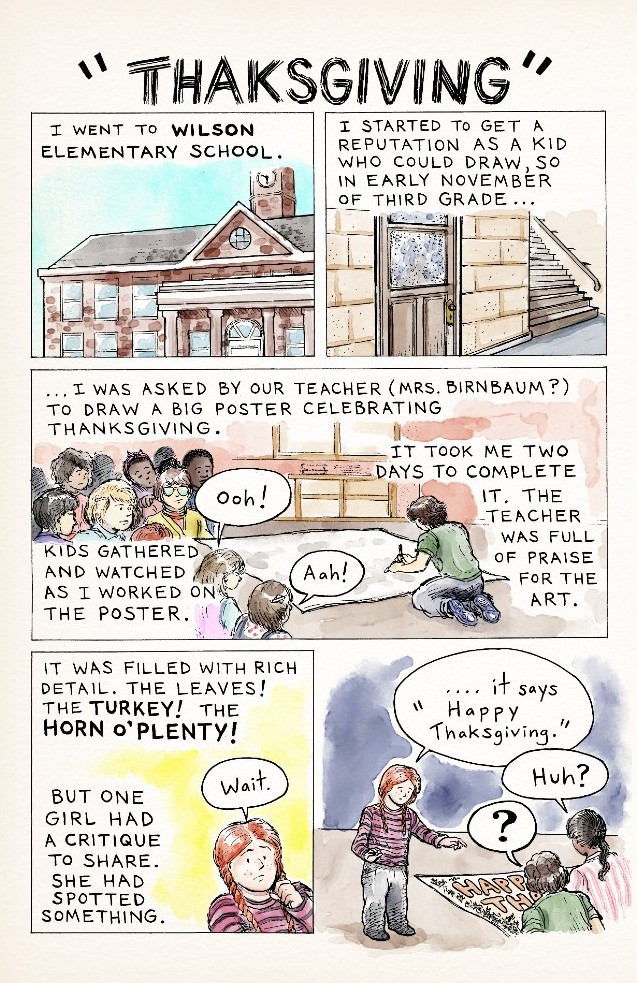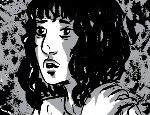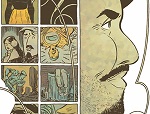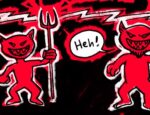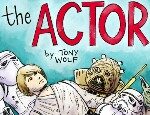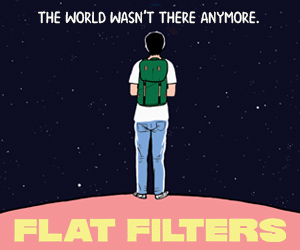
BROKEN FRONTIER AT 20! One of the undeniable pleasures of an operation like BF is seeing artists that we have either directly championed or who are associated with the site going on to bigger things. Tony Wolf has, to all intents and purposes, been our unofficial “cartoonist-in-residence” over the last year and a half with his autobio strips and comics ponderings appearing here with regularity since the summer of 2021. With Tales From The Wolf, a collection of years of his work in one volume, now available for pre-order our 20th birthday celebrations seemed a most apposite time to talk to Tony about his work and process.
ANDY OLIVER: Broken Frontier readers will know you first and foremost for your regular comics contributions to the site, but you have a far wider background in the arts. Can you elaborate on the wider creative resume of Tony Wolf as an opening question?
TONY WOLF: First off, I want to thank you for all your kindness and support, Andy! I really appreciate all the work and advocacy you do for comics and for creators. As for me, I’m a lifelong actor and voice-over actor, having done several national theatre tours, indie films on Apple TV and Amazon (one with a pivotal scene opposite Rizwan Manji from Peacemaker and Schitt’s Creek), and a bunch of comedy short films and videos. I’ve performed live at UCB and The PIT theatres in New York City.
On network TV, so far I’ve done co-star roles on The Marvelous Mrs. Maisel, The Blacklist, and in sketches on Comedy Central. I’ve gotten to do workshops and staged/concert readings of plays and musicals with several Tony Award nominees and Tony winners. Just when it seems like things are getting thin as far as acting work, something new eventually comes my way, and I’m always grateful for the chances I do get to work in the performing arts.
Of course, I love drawing and (beyond my mediocre teenage writer/artist attempts) eventually pushed myself to finally write short stories when I turned 40.
AO: Outside of Broken Frontier, where may readers have encountered your comics work previously?
WOLF: I was extremely lucky to get the opportunity to write, research, and illustrate 4 comics about unique food history for The New York Times, from 2017-2020. The NYT started a new sporadic section called Culinary Arts (described as ‘An occasional illustrated look at what we eat’), and my comics opened the door to other creators doing food comics for the paper. Beyond that, I’ve contributed pieces sporadically to sites like Bleeding Cool, The New Statesman, The Beat, and a few Brooklyn-based websites. There are also 2 printed minicomics out there in the wild of my Greenpoint of View and Tony’s True Tales of Comics stories, published back in 2014-2015 by Gryphon.
You have a bumper compilation of your comics from across the years coming later in 2022. How did the collection come to Cosmic Lion Productions and what can readers expect to see in the pages of Tales From The Wolf?
WOLF: I had been keeping an eye on Eli Schwab and his Cosmic Lion Productions for a while and really liked what I saw. Eli is a passionate creator who has been consistently publishing dynamic, joyful, and welcoming comics for years. He also is a huge music fan of diverse tastes who has several podcasts and zines under his producing umbrella. We have some friends in common, and when Eli approached me about the idea of publishing this compilation, I was elated. Eli is one of the minds behind the very fun ‘mega-zine’ WIZERD #1 & 2, which invited a massive assembly of indie comics creators to come and play! In addition, Eli has done 100 episodes of his podcast about Grendel with Ben Granoff The Devil In Detail and they’ve just had Matt Wagner himself on the show. Eli was also instrumental in starting up an online Facebook community connecting comics enthusiasts and writer/artists, which has borne great fruit over the years.
Eli and CLP were interested in varying the genres and styles in their line of comics, so I was psyched to be part of that expansion of their line. Other books in this upcoming new wave include Weird Myths by Turkish creator Ozan Bilaloğlu, Space Knights by Kevin Anthony Catalan, and Relic Hunter by Adam Lemnah.
AO: Most of the content in the book is autobio narrative. What drew you to autobiographical comics as a means of self-expression? Do you ever feel a sense of vulnerability about opening up your life to an audience?
WOLF: My mind just wasn’t coming up with fiction ideas I thought were worth doing, so for a long while I didn’t think of myself as a writer. But after years of reading autobio comics and friends nudging me to come up with something, I eventually had an idea. Inspired in large part by Harvey Pekar’s final work, Cleveland (beautifully illustrated by Joseph Remnant, with an introduction by Alan Moore!), I decided to do something about my then-neighborhood of Greenpoint Brooklyn in the late 90s. Later on, I decided to make some comics about being a comics fan (Tony’s True Tales of Comics) and then eventually, weird comics about food.
As for a sense of vulnerability, the great thing about writing the comics you draw is that you alone control what is shared in them, which stories you choose to tell. You get to be the sole gatekeeper, so to speak. The short piece I did about severe depression and anxiety, My Descent (for the Sweaty Palms anthology Vol. 1) was certainly more delicate, but I felt comfortable with sharing the things I shared. If anything, I’ve found (as many writers do, I’d imagine) that when we share difficult things, it has a greater chance of resonating or being somehow universal to an audience of readers.
WOLF: The first of your strips I ever read centred on a much-remembered moment in super-hero comics – the death of Guardian in Alpha Flight #12 (included in this collection). There’s that whole section in the book looking back both wistfully and nostalgically about your memories of ‘80s serial comics. What was your entry point to the world of comics and why do you think those childhood favourites still resonate with us so strongly decades later?
WOLF: My first exposure to comics was the Archie, Marvel and DC pocket-sized digests that were often sold at the checkout counters of grocery stores in the Long Island, NY area in the late 70s. My mother would take me shopping as a little kid and I found shopping pretty boring, so she would get me comics to keep me amused and distracted. I’ve always been fascinated with cartoons and all types of comics. I quickly began writing and drawing my own comics and cartoons in elementary school.
Marvel’s earliest line of Star Wars comics in the late 70s was my true entry point. From there, I was hooked into things like Marvel’s Secret Wars, Spider-Man, and Fantastic Four. I remember finding DC continuity too confusing, so I was perfectly poised for the first Crisis on Infinite Earths, which I enjoyed a lot. As far as nostalgia, I think it’s a combination – sure, there is the glow of nostalgia, but I think many would agree that the 80s was definitively a time for massive innovation in comics. Many of the concepts that are by now cliché in comics were truly groundbreaking then; truly revolutionary things were being done at the time, even by The Big Two.
(Also, I’m one of those that doesn’t think Star Wars is only considered good because you were a kid when you saw it – I think it’s intrinsically a great and radically original movie, and the fact that you were a kid when you saw it isn’t the main reason why people love it for decades and generations. While nostalgia matters a little bit, I think movies or works of art don’t endure for decades solely because of nostalgia. Sidebar over!)
As for Tony’s True Tales of Comics, I just liked the simple idea of doing comics about being a comics fan, and putting a spotlight on moments or memories that I hadn’t seen addressed before in visual essays about comics.
AO: The book combines slice-of-life, nostalgia, fiction and some sidesteps into political cartooning, including your powerful dissection of Donald Trump’s time as president. What is it about comics for you that makes them such a potent communication tool when it comes to socially relevant themes?
WOLF: Hard to say, but I think it’s the unique alchemy of words and pictures. Political cartoons have certainly been around for ages, and been a powerful tool for expression in all countries around the world. I had a friend in junior high school named Jon Kleinman who, raised on a steady diet of Mad Magazine, was writing and drawing his own very clever, very biting political cartoons at age 14, and this made a huge impression on me. He wasn’t waiting to be ‘professional’ nor was he waiting for anyone to give him permission to do political cartoons – he just made them because he wanted to.
Nate Powell’s historical comics (like his award-winning March, about the life of the late Rep. John Lewis) and his more recent political essay comics inspired me. Eventually I wanted to take a shot at doing my own political essay / philosophy comic (Where Is Evil?, debuted here on Broken Frontier). I’m certainly aware that a political cartoon or comics essay is unlikely to change the world, but nevertheless, the election of Donald Trump in the United States galvanized me to start making political protest art, even if it risked being seen as no more than ‘spitting into the wind.’ We make art because we must. We make art to push back. We make art to question authority. We make art regardless of the tides of history; sometimes *because of* the tides of history. Whether I ever have children or not, I couldn’t live with myself or face future generations if I didn’t at least try to make art and use my voice to push back against these increasingly fascistic trends.
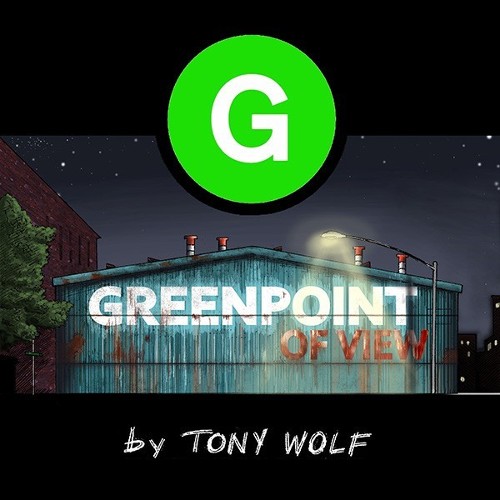
AO: Seeing most of your output over the years in one place in Tales From The Wolf, has it given you any insights into how your artistic style has evolved and developed over that time?
WOLF: It does feel both satisfying and surreal to see so much of my art over the years collected into one book. I see some ways in which my style has evolved and hopefully improved, but I’m not sure how to describe or quantify it. At the very least, I feel my lettering has gotten better over the years. Both my wife Jen and cartoonist Rick Parker have advised me to try putting less detail into my work, in order to save time – so I did try that on a few shorter stories collected in this volume. It’s hard for me to resist the temptation to get really detailed with my artwork when I draw.
I imagine this might be something other artists can relate to, but there’s another odd thing about seeing all my comics in one book: it feels a bit like, “Did all this really come out of me? How did I even get any of this done?” Many creatives have talked about almost feeling like the work spoke through them; some other muse or force took over, and we are just channels. I do feel like that a lot with my comics. I sometimes don’t quite know where it all came from. Most of the time, I’m a little mystified that I even did any of it, to be honest.
AO: Can you elaborate on your creative process and the mediums you work in?
WOLF: I’m a pretty old-fashioned pen and paper guy. I draw in pencil on paper, and I ink mostly with Micron pens, which I love (most of the time). I haven’t experimented much with other pens or brushes. I do like to do my all lettering by hand, although it’s very time-consuming. This way I can control and lay out everything on the page just the way I like it; writer/artists and film directors are famously control freaks, ha. I scan my work and then pass it on to a colorist for digital coloring or (in rare cases) painting by hand.
AO: Gryphon is your frequent partner providing the colouring for your comics. What do they bring to the mix and how does your collaborative process work?
WOLF: Gryphon (they/them) has been consistently helpful in providing excellent, vibrant coloring of varied styles and contributing ideas to the coloring work. It’s always fun when a colorist adds touches or flourishes to a panel that I wouldn’t have thought of at all. Gryphon has been very helpful when the stories required me to rearrange panels or come up with ideas for cover design concepts. I send Gryphon the black and white scanned page with detailed color notes and ideas, and they send me drafts. I give notes on those drafts, and we continue on, exchanging drafts until I feel the page is a lock. Then it’s on to the next page! They’ve also done Photoshop lettering corrections for me based off my hand-lettering, especially when the New York Times editors gave me some significant rewrites.
AO: We all know the more negative aspects of the comics scene and the challenges that creators face but given that we’re celebrating 20 years of Broken Frontier in this series of interviews we’re asking everyone a variation of this question. Over the last decade or so what were some of the key positive developments within comics as a scene/medium/industry that you think are worth celebrating?
WOLF: I know there’s a lot of challenging aspects to comics. They’re almost too numerous to mention. But like any of the arts, the good stuff outweighs the toxic stuff, the racism and sexism, or the doomsayers. “Comics” as we know it have expanded and thankfully become more inclusive over the years. A small but vocal group of small-minded people are upset about more people and more voices being invited to the party, and I feel we can’t let those people dictate how inclusive the party will be. I don’t see a downside to more creators being told they are welcome to share their perspectives, in fiction or non-fiction. As a white cis male in the arts, I am really happy that more people who are not white cis males are making art, telling stories, and claiming their space in this field. In my view, we are here to learn from others; we’re here to be joined together by a common passion and enthusiasm for making art.
Buy Tales From The Wolf online here
Interview by Andy Oliver
Top BF logo by Joe Stone





